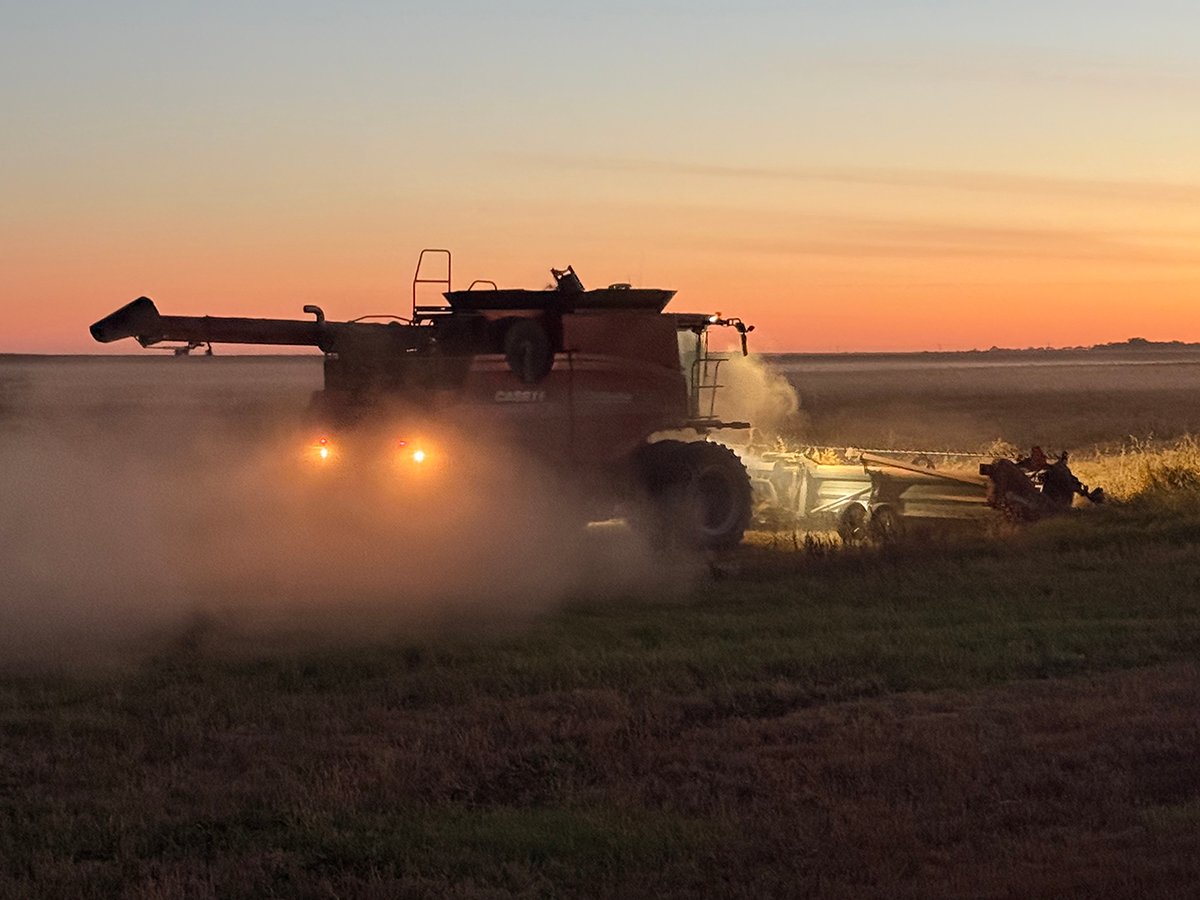Harvest equipment sits idle on each side of a dirt road as the rain falls.
On the west side sit two nearly new combines, a large grain cart hooked to a four-wheel drive tractor, and a tractor hooked to a grain bagger. On the east side of the road sits a single older combine with an aging tandem truck.
The shiny paint side of the road has $1.5 million in equipment, while the faded paint side has less than $100,000. On this day, neither outfit harvests a single acre. They sit in the mud for the next day and the day after that.
Read Also

Downturn in grain farm economics threatens to be long term
We might look back at this fall as the turning point in grain farm economics — the point where making money became really difficult.
When the ground and the crop are sufficiently dry, both outfits roar into action. It’s only a short window until the next rain delay.
In a year such as this, there will be a lot of pondering over harvest capacity. How do you get the crop off faster? How do you make the best use of short harvest windows?
The usual solution is to buy bigger and newer iron, but that’s not the only answer.
The use of grain carts has increased dramatically. Trucks can bog down in the field in a wet year such as this. You either dump the combines at the end of the field or you use a grain cart that has more flotation.
Producers with carts report a significant increase in daily combining capacity when they don’t have to stop to unload.
However, it’s a large additional cost to have a cart when you’re burning extra fuel and putting hours on a big tractor. Plus, you typically need an extra person to make full use of a cart.
Carts are probably more useful when they’re servicing two or more combines, but you see lots of carts being used with just one combine in the field.
I’m surprised when I see operations that have millions of dollars in equipment but don’t have their own moisture tester. Not being able to test quickly and frequently can cost you time.
Aeration fans can’t perform miracles, but they can get you into the field sooner, particularly on pulse crops.
Whether new or old, equipment will break down. How easily can you get a replacement part on a Sunday or holiday?
I called the emergency parts number at a dealership on the last good harvesting day before yet another big rain event. The call went to a Bible camp that was closed for the season. Choice words were uttered.
Beyond iron, there are many other considerations, including crop mix. Swathed canola typically withstands wet weather without large losses.
This year, producers are also happy to have flax, mustard and canaryseed in their rotation because they haven’t been downgraded like wheat, durum, barley and lentils.
Human resources play a big role. Do you have people who can stick with you through long rain delays? Can they go hard when the weather is finally favourable?
A harvest crew needs to be fed. The unsung heroes of harvest progress are those who pack lunches and make meals. When harvest days are short, stopping for a meal often isn’t practical. A well-stocked lunch kit makes better use of time.
But no matter how much you have invested in equipment and how many people you have working and no matter how efficient you are, you can’t control the weather.
No use making all your harvest capacity decisions based on how bad this fall has been.

















